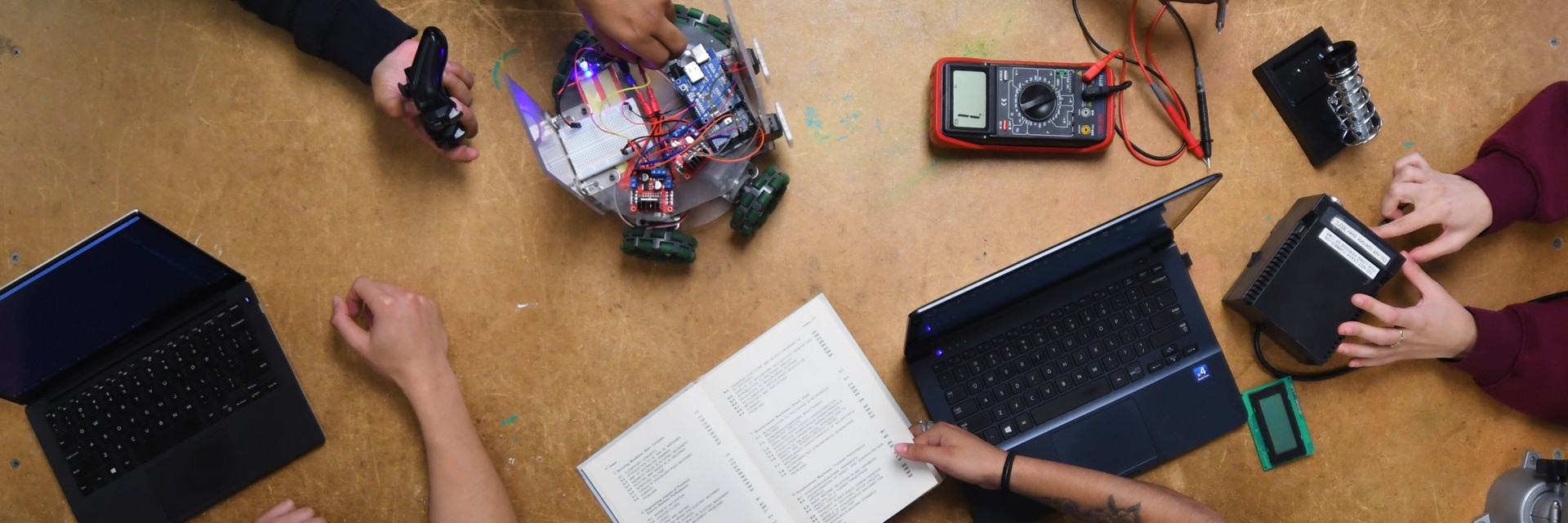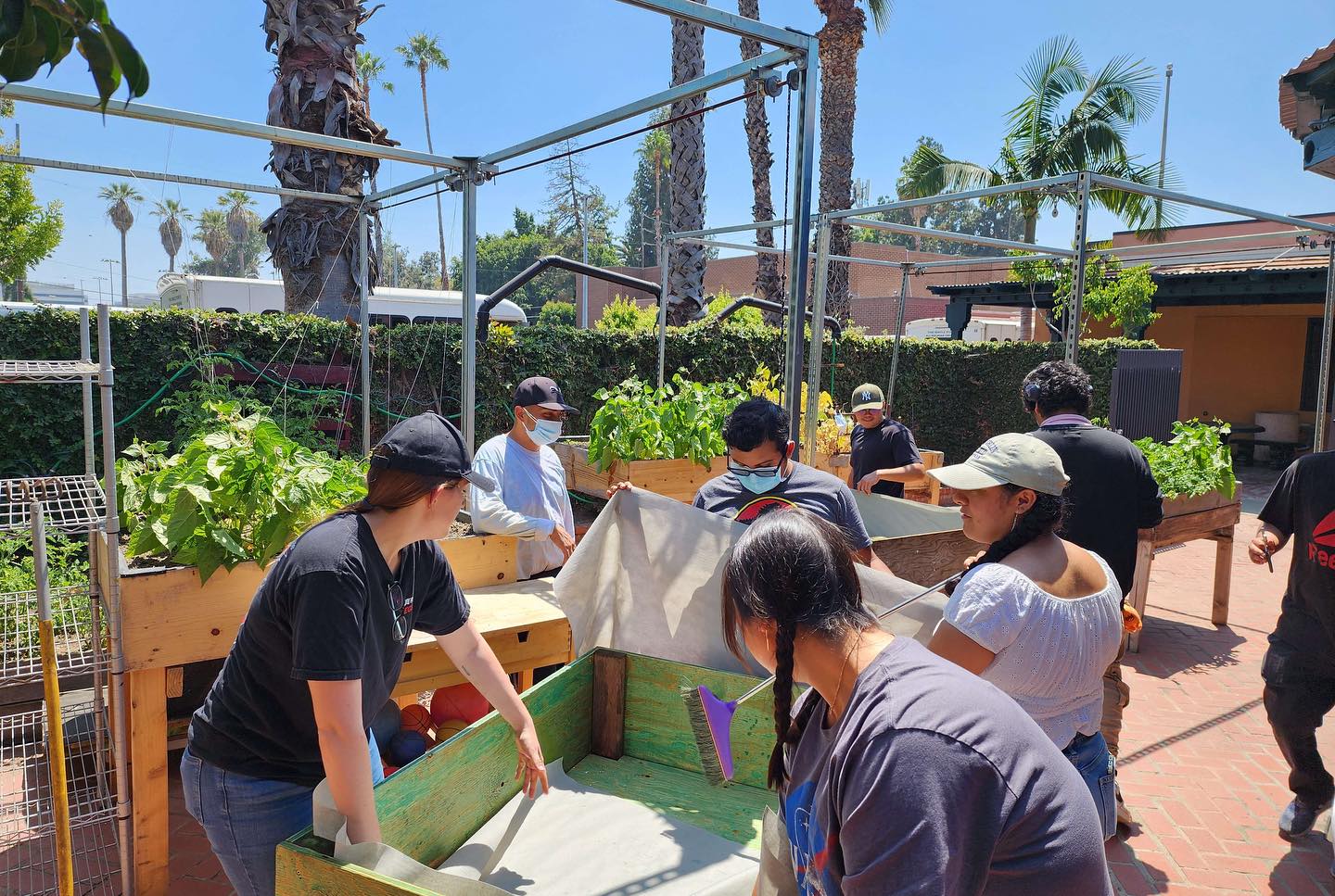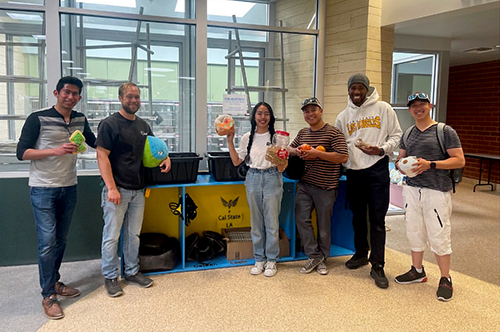Photo: GEM students working (photo credit: GEM)
On many college campuses, after listening to conversations around the coffee pot, you begin to notice a trend in faculty comments: students aren’t prepared in math and physics, they spend too much time on ________ (fill in whatever the latest technology of the day is), and are not motivated to understand the way the world behaves using 500-year-old equations with arrows, dots, crosses, etc.
Photo: GEM students working in ECST lab (photo credit: GEM)
Nevertheless, teachers always want to inspire students to learn and help develop their technical and non-technical skills. At Cal State LA, we believe this begins with meeting our students where they are. As teachers, we are asking two fundamentally important questions: “What are Cal State LA students’ unique strengths, and how should their strengths impact our teaching?”
We know that Cal State LA students are more engaged with their family and community, more interested in helping people, and have more diverse life experiences than any group of students we have worked with. As teachers, we want to use these strengths to build engineering and science skills. But how to use these strengths was not obvious.
Photo: BOOST students working on El Arca community project (photo credit: GEM)
Working with engineering students performing a series of community projects, a path began to emerge. Students were proactively volunteering to create outdoor structures for preschool students, storage systems for the LA Animal Shelter, planters for individuals with developmental disabilities, and playground equipment for the local YMCA. Students volunteered to complete these projects through my “Introduction to Mechanical Design” course and through the ECST BOOST Program. BOOST features urban-centered, design-focused service-learning projects that students volunteer to undertake during their critical transition between freshman and sophomore years.
Working alongside students on these projects, I began to understand how we can use our students’ strengths to prepare them to become the next generation of engineers and scientists. The power of combining community partnership with engineering and science education has become the seed of a new ECST initiative: IMPACT LA– Increasing Momentum through Partnerships and Community Transformation in Los Angeles.
Photo: GEM students working on Pine Tree Preschool community project (photo credit: GEM)
The goal of IMPACT LA is to harness our student’s inclination to give back to their community and use this inclination to help them develop as engineering and technology professionals. IMPACT LA has both extra-curricular and curricular components. Our extra-curricular activities include the BOOST Program and the Golden Eagle Makers (GEM) club. Since its formation in spring 2023, GEM has grown into a diverse and dynamic group of approximately 20 dedicated interdisciplinary students who work together with local community organizations to improve people’s lives.
Photo: GEM students, Dr. Bachman-North Central Animal Shelter project (photo credit: GEM)
During the club’s first 10 months, GEM has partnered with a local preschool, animal shelter, Sheriff’s Department, Shrines SoCal, Tikkun Olam Makers, and K-12 after-school programs. See the team in action in their regular postings on Instagram.
IMPACT LA’s curricular component is a sequence of three one-unit courses open to all students who wish to engage in human-centered design to create solutions to problems identified by their community. In the first course, “Human-Centered Design in Your Community,” students identify a need on campus; learn to use interviews, focus groups, and surveys to understand stakeholder needs; and then work together to develop a solution.
In the second course, “Building in Your Community,” students, with the assistance of the faculty and peer mentors, identify partners in the community and apply the human-centered design skills learned in the previous course. Students also learn fabrication and manufacturing skills needed for their project, including programming, app design, circuit modeling, microprocessors, machining, and welding. Students can then choose to take the third course, “Strengthening Community through Mentoring,” and become a team advisor for the prior courses.
Photo: GEM students community project for Shriner's Hospital (photo credit: GEM)
Our first piloted course launches in spring 2024. Wish us luck! Or feel free to join us if you have LA-based organizations to connect us with, design skills to share, or resources at your or your company’s disposal that can help with our projects.
If you wish to learn more or get involved with any of these activities, please reach out to me directly ([email protected]). We know the entire ECST community, including alumni and friends, are continually dedicated to “committing to excellence and engaging with community,” and we would love to have you involved!







